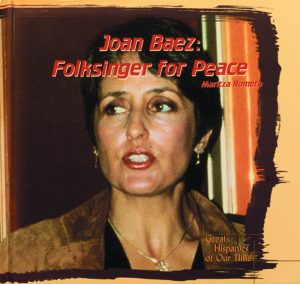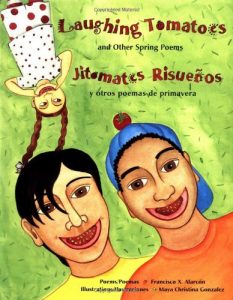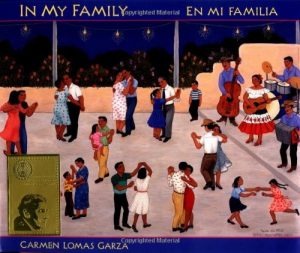 From the author of Family Pictures/Cuadros de familia comes a second book that returns readers once again to the town of Kingsville, Texas, near the border with Mexico. Through ful-color paintings and warm personal stories, Garza brings to life more loving memories of growing up in a traditional Mexican American community.
From the author of Family Pictures/Cuadros de familia comes a second book that returns readers once again to the town of Kingsville, Texas, near the border with Mexico. Through ful-color paintings and warm personal stories, Garza brings to life more loving memories of growing up in a traditional Mexican American community.
Latinx in US
Big Enough/Bastante grande
Mamá always sighs, “Muy, muy chica,” every time Lupita tries to help out at the restaurant that Mamá runs all by herself. But when push comes to shove–or when Grabb comes to swipe–everyone in this exciting tale discovers that, although Lupita may be too little for some tasks, she is big enough for others.
Carlos And The Cornfield / Carlos Y La Milpa De Maiz (Carlos Series)

In this delightful sequel to “Carlos y la Planta de Calabaza”, Carlos is told by his father that “you reap what you sow”. After some humorous experiences, Carlos comes to understand the rewards of hard work and learns a valuable lesson in listening. Full color.
See the review at WOW Review, Volume 8, Issue 4
Conversations with Contemporary Chicana and Chicano Writers
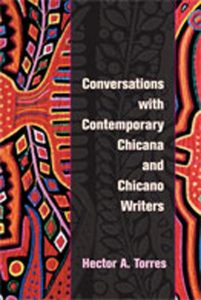 Hector A. Torres conducted these interviews with today’s popular Chicano/a writers, asking each about language and life between languages, about the creative drive that has guided them in their craft and commits them to their art. In sharing their responses, Torres reveals a brief biography of each author and a concise examination of their writings. Taking their stories and essays individually and collectively, Torres explains how each author reiterates issues that have concerned Mexican Americans since at least 1848. Chicano/a authors know that an abundance of politics can spoil a story, as can too little. The writers included here span historical terrain, first, under the shadow of Manifest Destiny and, then, under the America’s imperial sovereignty stance. Interviewees include Rolando Hinojosa (“I Reflect the Way Valleyites Act and React”), Arturo Islas (“I Don’t Like Labels and Categories”), Erlinda Gonzales-Berry (“On the New Mexican Borderlands”), Gloria Anzaldúa (“The Author Never Existed”), Ana Castillo (two separate interviews), Sandra Cisneros (two separate interviews), Pat Mora (“I Was Always at Home in Language”), Richard Rodriguez (“I Don’t Think I Exist”), Demetria Martinez (“To Speak as Global Citizens”), and Kathleen Alcalá (“To Tell the Counternarratives”).
Hector A. Torres conducted these interviews with today’s popular Chicano/a writers, asking each about language and life between languages, about the creative drive that has guided them in their craft and commits them to their art. In sharing their responses, Torres reveals a brief biography of each author and a concise examination of their writings. Taking their stories and essays individually and collectively, Torres explains how each author reiterates issues that have concerned Mexican Americans since at least 1848. Chicano/a authors know that an abundance of politics can spoil a story, as can too little. The writers included here span historical terrain, first, under the shadow of Manifest Destiny and, then, under the America’s imperial sovereignty stance. Interviewees include Rolando Hinojosa (“I Reflect the Way Valleyites Act and React”), Arturo Islas (“I Don’t Like Labels and Categories”), Erlinda Gonzales-Berry (“On the New Mexican Borderlands”), Gloria Anzaldúa (“The Author Never Existed”), Ana Castillo (two separate interviews), Sandra Cisneros (two separate interviews), Pat Mora (“I Was Always at Home in Language”), Richard Rodriguez (“I Don’t Think I Exist”), Demetria Martinez (“To Speak as Global Citizens”), and Kathleen Alcalá (“To Tell the Counternarratives”).
Finding Our Way
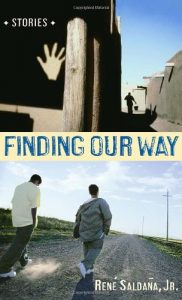 THESE STORIES TAKE the reader to meet mochos; cholos; Mr. and Mrs. Special; Manny with his mysterious phone calls; Melly, who dreams of being the first girl to take the Dive; Andy and Ruthie, who find that being “boyfriend-girlfriend” takes on new meaning the night of the prom; and Chuy, who seems determined to get kicked out of school. Each distinct voice shares secret thoughts that draw the reader into daily dramas of love, danger, loyalty, and pride. In the final story, a shocking tragedy reverberates through the barrio.“With this collection, Saldaña makes a significant contribution to the field of Latino short stories for young readers.”—VOYA, Starred“These powerfully written, provocative selections have universal appeal and subtle, thoughtful themes.”—School Library Journal“While much is revealed, just as much is implied, making the stories layered and rich while still rendering them accessible.”—The BulletinFrom the Hardcover edition.
THESE STORIES TAKE the reader to meet mochos; cholos; Mr. and Mrs. Special; Manny with his mysterious phone calls; Melly, who dreams of being the first girl to take the Dive; Andy and Ruthie, who find that being “boyfriend-girlfriend” takes on new meaning the night of the prom; and Chuy, who seems determined to get kicked out of school. Each distinct voice shares secret thoughts that draw the reader into daily dramas of love, danger, loyalty, and pride. In the final story, a shocking tragedy reverberates through the barrio.“With this collection, Saldaña makes a significant contribution to the field of Latino short stories for young readers.”—VOYA, Starred“These powerfully written, provocative selections have universal appeal and subtle, thoughtful themes.”—School Library Journal“While much is revealed, just as much is implied, making the stories layered and rich while still rendering them accessible.”—The BulletinFrom the Hardcover edition.
My Feet Are Laughing
Sadie, an imaginative young Dominican American, relates her experiences growing up in her grandmother’s brownstone house in Harlem.
Joan Baez: Folksinger for Peace (Great Hispanics of Our Time)
Laughing Tomatoes And Other Spring Poems / Jitomates Risuenos Y Otros Poemas De Primavera
Lupe Vargas And Her Super Best Friend / Lupe Vargas Y Su Super Mejor Amiga
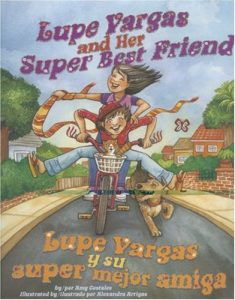 Lupe and Maritza are super best friends. When they’re together, they can be anything they want—pirates, scientists, or heroes. When they’re apart, well, life just isn’t as fun. This is the story of two girls who make each day a new adventure. And when they get into a spat—which is inevitable even among the most super, best of friends—they have to find a way to make it right. And luckily, with a little bit of this and a little bit of that, they do.
Lupe and Maritza are super best friends. When they’re together, they can be anything they want—pirates, scientists, or heroes. When they’re apart, well, life just isn’t as fun. This is the story of two girls who make each day a new adventure. And when they get into a spat—which is inevitable even among the most super, best of friends—they have to find a way to make it right. And luckily, with a little bit of this and a little bit of that, they do.
Off and Running
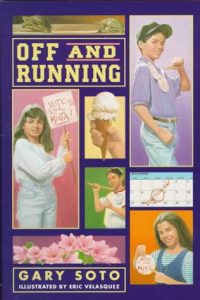 The biggest race of the school year is on! Fifth-grader Miata Ramirez is running for class president. Her best friend, Ana, is her running mate. The girls are stunned when they learn they are running against class clown Rudy Herrera and his friend Alex. At first Miata is certain she will win the election. She has big plans to make the school a better place. She’ll clean up the graffiti, plant flowers and trees, and get computers. Rudy’s confident he’ll get votes by promising longer recess periods and selling the students ice cream every day. Miata is serious and means business. But the boys are funnier and louder. The girls think if they quickly change their image, they’ll get those extra votes. But the election is just a few days away. Readers will catch election fever as the boys square off against the girls in Gary Soto’s latest novel featuring Miata Ramirez from The Skirt and Rudy Herrera from The Pool Party.
The biggest race of the school year is on! Fifth-grader Miata Ramirez is running for class president. Her best friend, Ana, is her running mate. The girls are stunned when they learn they are running against class clown Rudy Herrera and his friend Alex. At first Miata is certain she will win the election. She has big plans to make the school a better place. She’ll clean up the graffiti, plant flowers and trees, and get computers. Rudy’s confident he’ll get votes by promising longer recess periods and selling the students ice cream every day. Miata is serious and means business. But the boys are funnier and louder. The girls think if they quickly change their image, they’ll get those extra votes. But the election is just a few days away. Readers will catch election fever as the boys square off against the girls in Gary Soto’s latest novel featuring Miata Ramirez from The Skirt and Rudy Herrera from The Pool Party.

